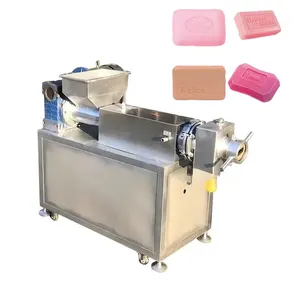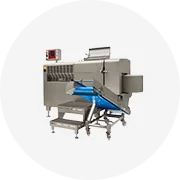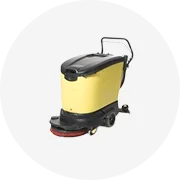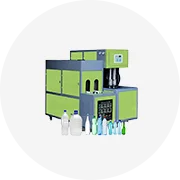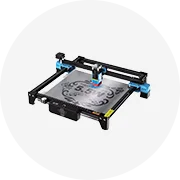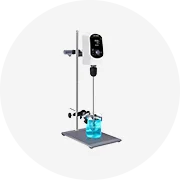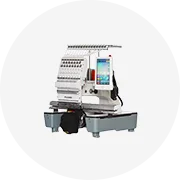Phổ biến trong ngành của bạn

(Chakme) 3.5mm 3D in phòng tắm Mat mới Desgin 2024 instock sư tử bán buôn Tắm Mat in
1,65 US$
Đơn hàng tối thiểu: 100 Cái


Nhất Bán Thân Thiện Với Môi Xe Kính Nhà Bếp Dài Rửa Vải Loại Bỏ Dầu Không Dệt Sợi Nhỏ Cho Làm Sạch Vải
0,43 US$ - 0,47 US$
Đơn hàng tối thiểu: 20000 Túi


Bán buôn tái chế giải pháp DOPE nhuộm PU tráng 1000mm 600D Oxford Polyester Oxford vải vải Nhà cung cấp
1,55 US$ - 4,00 US$
Đơn hàng tối thiểu: 2 Mét


Vải Carbon Thơm Lạ Mắt Vải Sợi Carbon Jacquard 3d Sợi Carbon Jacquard
15,96 US$
Đơn hàng tối thiểu: 1 Mét vuông


Dệt may thiết kế mới của hoa lớn 100% Polyester Stretch satin in kỹ thuật số vải cho ăn mặc và Ngủ Mặc

3,40 US$ - 4,00 US$
Đơn hàng tối thiểu: 2000 Mét
Vận chuyển mỗi chiếc: 52,56 US$


Tùy Chỉnh Dập Nổi Thương Hiệu 3d Mềm Pvc Cao Su Vải Nhãn Nhãn Cao Su 3d
0,01 US$ - 0,30 US$
Đơn hàng tối thiểu: 100 Cái
Vận chuyển mỗi chiếc: 0,21 US$

Vải Đệm Lục Giác 100% Sợi Nhân Tạo Mẫu Miễn Phí Vải Đệm 3d
10,00 US$ - 20,00 US$
Đơn hàng tối thiểu: 1 Mét

3D khối lập phương cuben lập thể sợi carbon vải rắn Jacquard sợi carbon vải
12,99 US$ - 20,99 US$
Đơn hàng tối thiểu: 10 Mét vuông

Thiết Kế Mới Spandex Stretch 3d Lưới Vải Cho Phụ Nữ Vải
Sẵn sàng vận chuyển
4,00 US$ - 4,50 US$
Đơn hàng tối thiểu: 5 Mét
Vận chuyển mỗi chiếc: 4,80 US$

Vải Polyester 550gsm Lưới 3D Poly M14/ROOSO 100% Ba Lô Chiến Thuật Lưới Dày 6Mm Vải Lưới 3d
4,50 US$ - 5,03 US$
Đơn hàng tối thiểu: 100 Mét
Vận chuyển mỗi chiếc: 1,98 US$

Keer Nhà Máy Giá wholesale108 * 61 mật độ 278gsm100% Polyester vải dày vải 3D rắn mô hình ren mô hình
6,03 US$ - 7,46 US$
Đơn hàng tối thiểu: 5 Mét
Vận chuyển mỗi chiếc: 9,12 US$

2Mm New Thời Trang Không Khí Lưới Vải Polyester 3D Lưới Vải Cho Bé Vận Chuyển
2,55 US$ - 2,60 US$
Đơn hàng tối thiểu: 1 Yard

Hot Bán 3d Carbon Sợi Vải Jacquard Vải Sợi Carbon
5,00 US$ - 12,00 US$
Đơn hàng tối thiểu: 100 Mét vuông

Nhiệt độ cao sức đề kháng 3D Jacquard sợi carbon vải vải
17,20 US$ - 21,00 US$
Đơn hàng tối thiểu: 10 Mét
Vận chuyển mỗi chiếc: 7,27 US$

Thảm Cưới Khăn Trải Bàn 3D Rose Flower Thêu Satin Rosette Vải Thêu Rosette Vải Cho Trang Trí Đám Cưới
2,50 US$ - 3,30 US$
Đơn hàng tối thiểu: 300 Mét

Sandwich Lưới Màu Sắc Khác Nhau Polyester Lưới Vải 3D Spacer Fabbic Air Layer Mesh
0,88 US$ - 0,99 US$
Đơn hàng tối thiểu: 1000 Mét

Sandwich Lưới Vải Đối Với Trang Chủ Dệt May/100% Polyester 3d Air Net Vải
0,60 US$ - 1,50 US$
Đơn hàng tối thiểu: 2000 Mét

Yifengyuan Hàng Dệt Vải Lưới Đàn Hồi Cao 3d Tổ Ong Chủ Yếu Được Sử Dụng Cho Võng Thú Cưng Và Địu Em Bé
1,60 US$ - 2,00 US$
Đơn hàng tối thiểu: 1000 Mét
Vận chuyển mỗi chiếc: 0,95 US$

3D vuông sợi carbon 1m rộng Jacquard xe sợi Carbon vải 3D sợi carbon vải 3K 230gsm
18,00 US$ - 21,00 US$
Đơn hàng tối thiểu: 1 Mét vuông
Vận chuyển mỗi chiếc: 25,54 US$

Vải Thổ Cẩm Hoa 3d Sang Trọng Kiểu Pháp Dùng Cho Váy Vải Hoặc Túi Làm Váy
4,85 US$ - 6,85 US$
Đơn hàng tối thiểu: 5 Mét
Vận chuyển mỗi chiếc: 7,19 US$

Pháp Phong Cách Sang Trọng Floral & Cat 3D Jacquard Thổ Cẩm Vải Cho Váy Vải Hoặc Túi
Sẵn sàng vận chuyển
4,90 US$ - 6,00 US$
Đơn hàng tối thiểu: 6 Yard
Vận chuyển mỗi chiếc: 5,00 US$

Vải Lưới Làm Bánh Sandwich 3d Dày 20Mm Cho Nệm Sưởi Ấm
3,80 US$ - 4,50 US$
Đơn hàng tối thiểu: 200 Kilogram
Vận chuyển mỗi chiếc: 0,01 US$

New Arrival 12K 120gsm 150Gsm 200gsm 3D triaxal lây lan Tow Carbon vải sợi CF vải cho trang trí
38,50 US$ - 55,00 US$
Đơn hàng tối thiểu: 2 Cái
Vận chuyển mỗi chiếc: 20,11 US$

Sọ hiệp sĩ Sparta anh hùng mô hình PVC 3D cao su vải sửa chữa trang trí Sticker vá cho Áo khoác hoodie Sticker đính
Sẵn sàng vận chuyển
0,54 US$ - 0,70 US$
Đơn hàng tối thiểu: 10 Cái
Vận chuyển mỗi chiếc: 0,68 US$

100% Polyester Màn Hình In Lưới Vải Cho Hàng May Mặc 056 Mềm 3D Spacer Sandwich Polyester 3d Air Net Lưới Vải Cho Hàng May Mặc
2,24 US$
Đơn hàng tối thiểu: 1000 Mét
Vận chuyển mỗi chiếc: 5,83 US$

Heart Dot Yarn Dyed Jacquard Organic Cotton Cloth 3D Air Layer Quilt Scuba Diving Mask Jacquard Knit Fabric for Kid Baby Clothes
5,10 US$ - 10,00 US$
Đơn hàng tối thiểu: 1 Mét
Vận chuyển mỗi chiếc: 62,44 US$

Nóng Bán Polyester Trong Kho Chất Lượng Cao Vải Cho Trang Phục 3D Thêu Trang Trí Vải In Hoa Cưới Vải
Sẵn sàng vận chuyển
1,80 US$ - 4,00 US$
Đơn hàng tối thiểu: 2 Yard
Vận chuyển mỗi chiếc: 10,02 US$

Tùy chỉnh cờ bóng đá vải 3D PVC các bản vá lỗi cho quần áo truyền nhiệt
0,19 US$ - 0,49 US$
Đơn hàng tối thiểu: 500 Cái

Chất Lượng Cao 100% Polyester Thổ Cẩm 3D Jacquard Thổ Cẩm Vải Cho Váy Vải Hoặc Túi
4,50 US$ - 6,40 US$
Đơn hàng tối thiểu: 6 Mét


Tùy Chỉnh Mô Hình Sợi Nhỏ Polyester 3D In Vải 3D Phân Tán In Vải Cho Trẻ Em
0,58 US$ - 0,61 US$
Đơn hàng tối thiểu: 5000 Mét

2023 Đồng bằng màu trắng nhuộm polyester căng vải vải 3D công nghệ Scuba vải cho Hoodie
0,40 US$ - 0,58 US$
Đơn hàng tối thiểu: 10000 Mét
Vận chuyển mỗi chiếc: 10,52 US$

Đồng bằng và Twill sợi carbon vải 3D sợi carbon vải sợi Carbon tùy biến màu sắc
Sẵn sàng vận chuyển
16,00 US$ - 17,00 US$
Đơn hàng tối thiểu: 10 Mét vuông
Vận chuyển mỗi chiếc: 46,89 US$

Tại Chỗ Bán buôn Net vải 3D Rose Ribbon thêu vải 3D nhỏ Rose Wedding Dress trang trí vải

3,95 US$ - 4,95 US$
Đơn hàng tối thiểu: 1 Yard
Vận chuyển mỗi chiếc: 18,50 US$

In 100% polyester vải dệt tấm ga trải giường 3d tấm ga trải giường phân tán vải sợi nhỏ
0,20 US$ - 0,60 US$
Đơn hàng tối thiểu: 50000 Mét

Trung quốc 110gsm 235 cm chiều rộng 100% sợi nhỏ polyester vải 3D phân tán vải in cho bộ giường
0,82 US$ - 0,84 US$
Đơn hàng tối thiểu: 100 Mét

Mới Đến 3D Gấu Polyester Spandex Jacquard Scubas Vải Cho Trẻ Em Vải Và Gối
4,08 US$ - 4,23 US$
Đơn hàng tối thiểu: 25 Kilogram

Chất lượng cao vải nhung 3D nổi Hà Lan nhung bọc vải
0,60 US$ - 0,80 US$
Đơn hàng tối thiểu: 500 Mét
Vận chuyển mỗi chiếc: 3,48 US$
Các danh mục hàng đầu
Giới thiệu về vải 3d
vải 3d là các thiết bị được máy tính hỗ trợ cho phép in các vật thể ba chiều .. vải 3d rất tiện ích cho dù xem xét cho mục đích chuyên nghiệp hay để tạo hàng thủ công tại nhà. Alibaba.com đưa ra. vải 3d từ tất cả các thương hiệu nổi tiếng với ưu đãi đặc biệt cho khách hàng định kỳ.
vải 3d lấy dữ liệu kỹ thuật số từ bộ xử lý giống như các máy in truyền thống. Sự khác biệt nằm ở đầu ra, trong đó máy in truyền thống in trên giấy và. vải 3d cung cấp vật liệu 3D chắc chắn. Những bản in 3D này của. vải 3d được thực hiện bằng cách lắng đọng từng lớp theo hình ảnh kỹ thuật số của các đối tượng. Điều này được thực hiện bằng cách kéo nhựa nóng chảy ra qua một vòi phun mỏng và di chuyển xung quanh một cách chính xác với sự điều khiển của máy tính.
Bản in 3D cho phép hiển thị tốt hơn đầu ra do đó chứng minh. vải 3d được sử dụng rộng rãi trong các lĩnh vực y tế, sản xuất, quốc phòng, v.v. vải 3d làm cho việc tạo mẫu thiết kế dễ dàng hơn, mang lại phạm vi sửa đổi và đổi mới tốt hơn của sản phẩm. Sự phát triển của. vải 3d đã giúp một số ngành như ô tô, sản xuất thiết bị y tế và quốc phòng và nhiều lĩnh vực khác giảm chi phí đáng kể.
Làm việc với hàng triệu khách hàng, Alibaba.com hiểu nhu cầu về chất lượng và giá cả tiêu chuẩn. Truy cập trang web để khám phá các sản phẩm ở tất cả các thương hiệu và khoảng giá. Sự tách biệt này của. vải 3d dựa trên các tính năng của chúng cho phép người dùng chọn các sản phẩm thân thiện với túi tiền với các thông số kỹ thuật mong muốn của họ. Đối với bất kỳ ai cho rằng chất lượng và giá cả đi đôi với nhau, Alibaba.com là cái tên phá vỡ quan niệm này.
Bản in 3D cho phép hiển thị tốt hơn đầu ra do đó chứng minh. vải 3d được sử dụng rộng rãi trong các lĩnh vực y tế, sản xuất, quốc phòng, v.v. vải 3d làm cho việc tạo mẫu thiết kế dễ dàng hơn, mang lại phạm vi sửa đổi và đổi mới tốt hơn của sản phẩm. Sự phát triển của. vải 3d đã giúp một số ngành như ô tô, sản xuất thiết bị y tế và quốc phòng và nhiều lĩnh vực khác giảm chi phí đáng kể.
Làm việc với hàng triệu khách hàng, Alibaba.com hiểu nhu cầu về chất lượng và giá cả tiêu chuẩn. Truy cập trang web để khám phá các sản phẩm ở tất cả các thương hiệu và khoảng giá. Sự tách biệt này của. vải 3d dựa trên các tính năng của chúng cho phép người dùng chọn các sản phẩm thân thiện với túi tiền với các thông số kỹ thuật mong muốn của họ. Đối với bất kỳ ai cho rằng chất lượng và giá cả đi đôi với nhau, Alibaba.com là cái tên phá vỡ quan niệm này.


